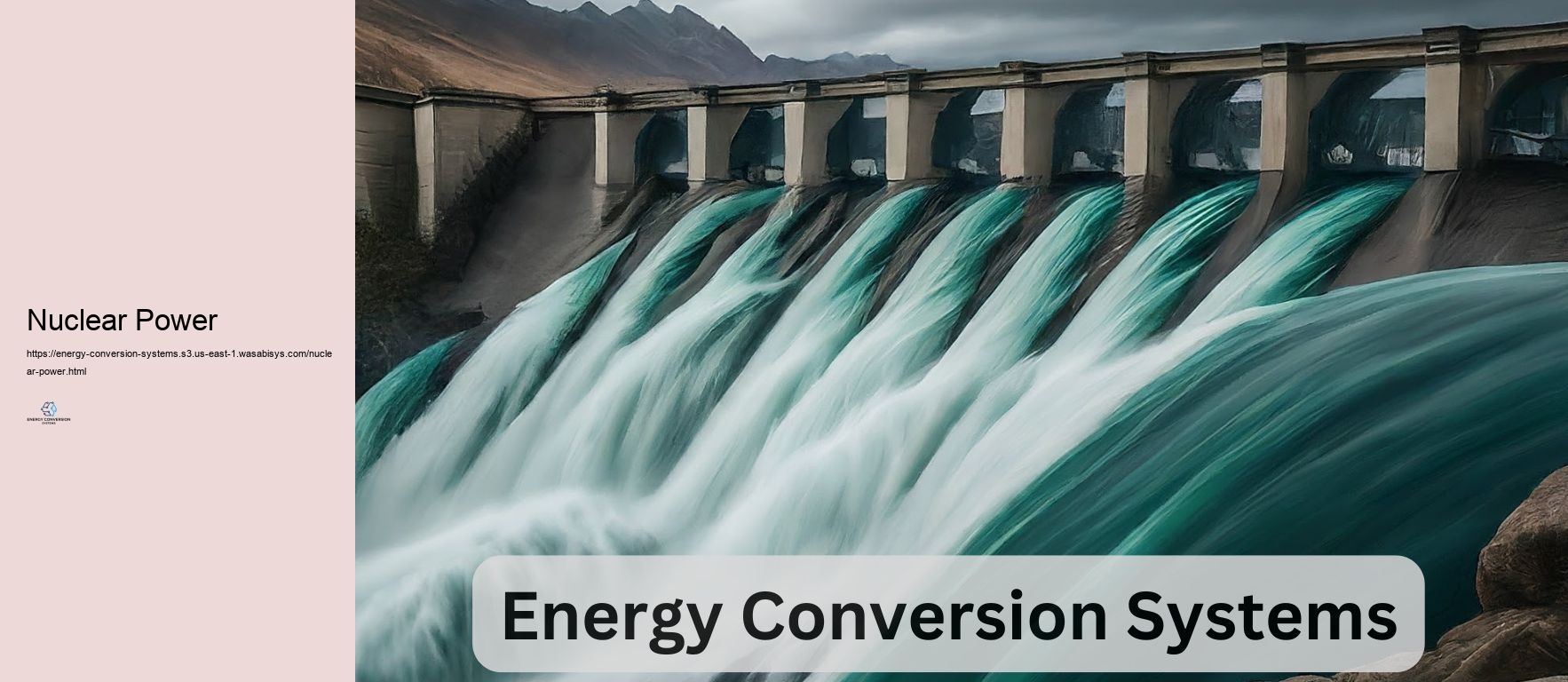

Energy conversion systems play an essential function in modern culture, making it possible for the remodeling of different types of energy right into more useful and sensible forms. These systems are vital to power generation, transport, commercial processes, and everyday modern-day technologies. Recognizing the concepts and applications of energy conversion systems is essential for designers, policymakers, and anyone curious regarding the location of energy. At its core, energy conversion is governed by the regulations of thermodynamics. The extremely first regulation of thermodynamics, which specifies that energy can not be generated or damaged yet just transformed from one kind to another, is the structure of all energy conversion systems. The 2nd regulation introduces the concept of worsening and effectiveness, clarifying why no energy conversion procedure can be 100% effective. These vital principles underpin the format and treatment of all energy conversion systems. Among one of one of the most common and substantial energy conversion systems is the thermal nuclear reactor. These centers transform the chemical energy maintained in nonrenewable fuel resources (such as coal, oil, or gas) or nuclear fuel right into electric energy. The treatment commonly involves melting the gas to warm water, creating steam that drives a generator connected to a generator. This system, based upon the Rankine cycle, is an archetype of changing thermal energy to mechanical energy and afterwards to electric energy. Modern thermal nuclear reactor employ many approaches to increase effectiveness, such as supercritical vapor problems and combined cycle systems. Renewable resource systems stand for one more essential team of energy conversion. Solar photovoltaic or pv (PV) panels change light energy directly right into electric energy via the photoelectric outcome. Wind wind turbines change the kinetic energy of moving air into power and afterwards right into power. Nuclear Power Hydroelectric nuclear reactor harness the possible energy of water kept at elevation, converting it to power using wind generators and after that to electrical energy. Geothermal Plants Each of these systems has its one-of-a-kind principles and challenges, nevertheless all satisfy of transforming naturally happening energy right into a lot more functional kinds. Internal burning engines, frequently made use of in transport and some power generation applications, transform the chemical energy in gas right into power with controlled surges. These engines, whether fuel or diesel, operate thermodynamic cycles (such as the Otto cycle or Diesel cycle) that consist of compression, burning, growth, and exhaust phases. The effectiveness of these engines has been constantly enhanced with enhancements in products, gas shot systems, and exhaust gas treatment technologies. Gas cells stand for a cutting-edge energy conversion system that directly transforms chemical energy right into electric energy without burning. These gadgets utilize electrochemical responses to create power, with hydrogen being a common gas. Fuel cells have applications ranging from mobile resource of power to huge stationary power generation, and they deal the possibility for high effectiveness and lowered discharges. Heat pumps and refrigeration systems are energy conversion systems that action heat from one location to an additional, successfully converting electric energy into thermal energy transfer. These systems, which run the vapor compression cycle or absorption cycle, are thoroughly taken advantage of for heating, cooling, and refrigeration in family, industrial, and industrial settings. The performance of heatpump is often disclosed as a coefficient of performance (POLICE), which can be greater than one, as they transfer warmth instead of create it straight. Electrochemical energy conversion systems, such as batteries and supercapacitors, play a vital function in energy storage area and mobile power applications. These tools change chemical energy right into electric energy (during discharge) and vice versa (throughout billing). The concepts of electrochemistry control their procedure, with recurring research concentrating on boosting energy density, power density, and cycle life. Thermoelectric devices represent a distinctive kind of energy conversion, straight changing temperature differences right into electrical energy (Seebeck impact) or utilizing electric energy to create a temperature distinction (Peltier effect). While presently restricted in performance, these solid-state tools have applications in waste warm recovery, cooling down systems, and space expedition. Magnetohydrodynamic (MHD) generators are an innovative energy conversion system that directly converts thermal energy right into electrical energy without transferring parts. By passing a high-temperature, electrically conductive liquid via a magnetic field, these systems develop power. While still primarily speculative, MHD generators hold warranty for high-temperature, high-efficiency power generation. The application of energy conversion systems expands throughout different fields. In the power generation market, large thermal, nuclear, and renewable energy systems supply electrical energy to the grid. In transport, inner burning engines, electrical electric motors, and emerging technologies like fuel cells power autos. Industrial processes depend on a wide variety of energy conversion systems for home heating, cooling, and powering devices. In the building and business sectors, heating and cooling down systems, lighting, and home devices all consist of energy conversion. Effectiveness remodelling is a consistent emphasis in the development of energy conversion systems. This involves not just boosting the efficiency of specific aspects however likewise optimizing whole systems and including different technologies. For instance, consolidated warm and power (CHP) systems boost total energy application by tape-recording waste heat from power generation for home heating or commercial procedures. The environmental influence of energy conversion systems is a dramatically crucial consideration. Numerous initiatives are concentrated on decreasing exhausts from fossil fuel-based systems, boosting the efficiency and dependability of renewable resource systems, and developing brand-new, cleaner innovations. The concept of life cycle analysis is vital in examining genuine ecological impact of different energy conversion systems, considering aspects such as resource elimination, manufacturing, operation, and disposal. Energy conversion systems are crucial to modern-day people, enabling the use of different energy sources to accomplish human needs. From large power generation to private digital tools, these systems are common in our everyday lives. As technology developments and environmental worries broaden, the location of energy conversion stays to evolve, with continual {research and development targeted at enhancing effectiveness, lessening ecological effect, and making use of new energy sources. Comprehending the concepts and applications of these systems is important for resolving the energy problems of the future and relocating towards a much more lasting energy landscape.
Energy conversion advancements are at the facility of transforming exactly how we harness and use energy, playing a vital obligation in the change in the direction of sustainable and efficient energy systems. From photovoltaics to fuel cells, these technologies include a diverse range of systems that convert natural energy sources right into usable types, such as electrical energy, cozy, and gas. Each contemporary innovation operates on distinct principles and is in shape to specific applications, supplying unique advantages and barriers. Recognizing these contemporary technologies is essential for progressing energy services that settle global energy demands while decreasing ecological impact. Photovoltaics (PV) represent among one of the most extensively determined kinds of solar energy conversion. These systems use semiconductor products, generally silicon, to transform sunshine directly right into power through the photovoltaic or pv impact. When sunshine strikes the surface area of a PV cell, it thrills electrons, developing an electric present. Photovoltaic or pv or pv modern innovation has in fact progressed substantially throughout the years, with developments in materials and layout resulting in increased performance and minimized costs.
Energy conversion systems are necessary to modern culture, playing a critical function in changing raw energy sources right into practical power that gas homes, markets, and transport. These systems consist of a range of innovations and procedures produced to convert energy from one kind to one more, such as transforming chemical energy in gas to mechanical energy in engines or electrical energy in nuclear power plant. A thorough examination of the crucial parts in energy conversion systems discloses the intricacy and refinement associated with effectively using and making use of energy resources. Identifying these components is important for optimizing efficiency, enhancing efficiency, and decreasing environmental influence. The beginning factor of any kind of type of energy conversion system is the energy resource, which can be environmentally friendly or non-renewable. Renewable energy resources consist of solar, wind, hydroelectric, geothermal, and biomass, while non-renewable sources integrate nonrenewable fuel sources like coal, oil, and gas, along with atomic energy. The selection of energy resource considerably influences the design and treatment of the conversion system, as each source has distinct functions, such as schedule, energy density, and ecological impact. As an example, solar energy systems depend on photovoltaic cells or solar thermal collection agencies to capture sunshine, while fossil fuel-based systems use burning processes to launch energy kept in chemical bonds. At the heart of any kind of energy conversion system is the energy conversion tool, which modifications the main energy resource right into a different kind of energy. Usual conversion gizmos consist of generators, engines, generators, and gas cells. Generators, utilized in both fossil fuel and renewable resource systems, change kinetic energy from vapor, water, or wind into power, which is afterwards transformed into electric energy by generators. Interior burning engines, extensive in transportation, transform chemical energy from fuels right into mechanical energy via regulated explosions. Gas cells, on the various other hand, straight transform chemical energy from hydrogen or various other gas right into electrical energy with electrochemical reactions, providing high efficiency and decreased tires. Warm exchangers are vital aspects in many energy conversion systems, particularly those consisting of thermal procedures. These devices help with the transfer of heat in between two or a lot more fluids without mixing them, boosting the effectiveness of energy conversion.
Discover the latest advancements in energy conversion systems, from solar and wind to fuel cells and biomass! Learn how these innovations are driving sustainable energy solutions for a cleaner, more efficient future.https://t.co/9SfMjPHIu9
— Turbine Training And Operation (@turbinetraine) August 25, 2024
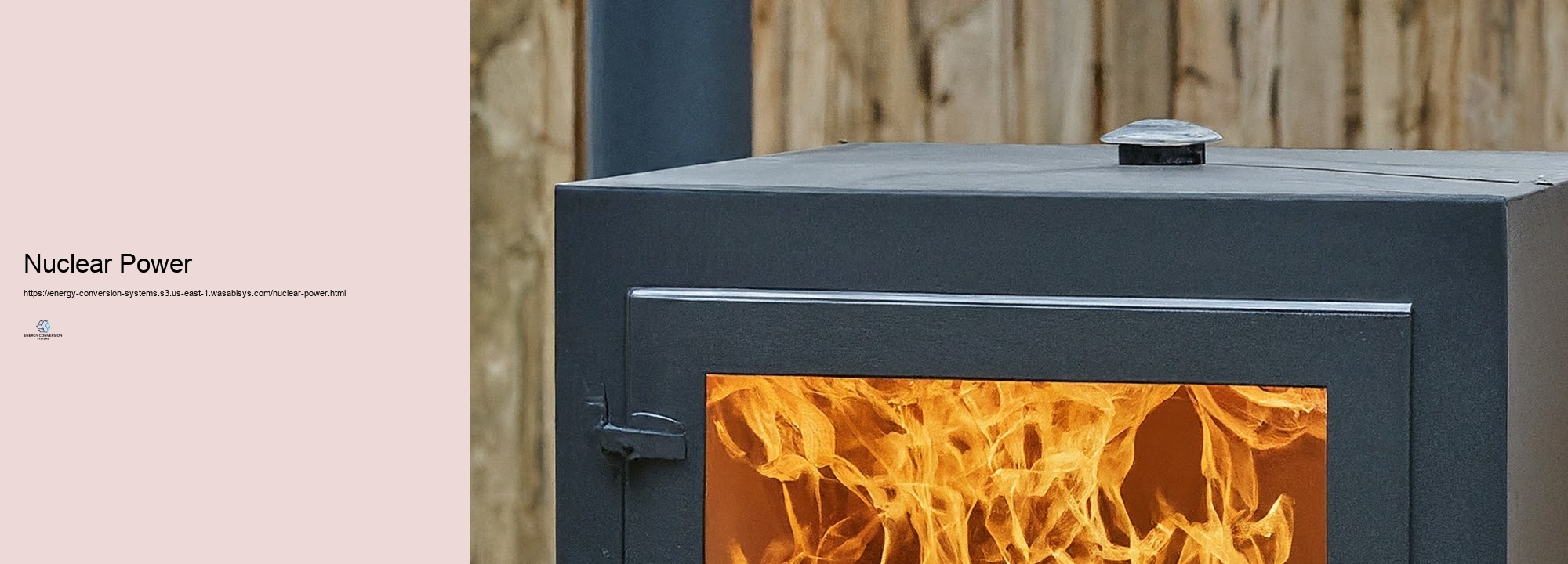
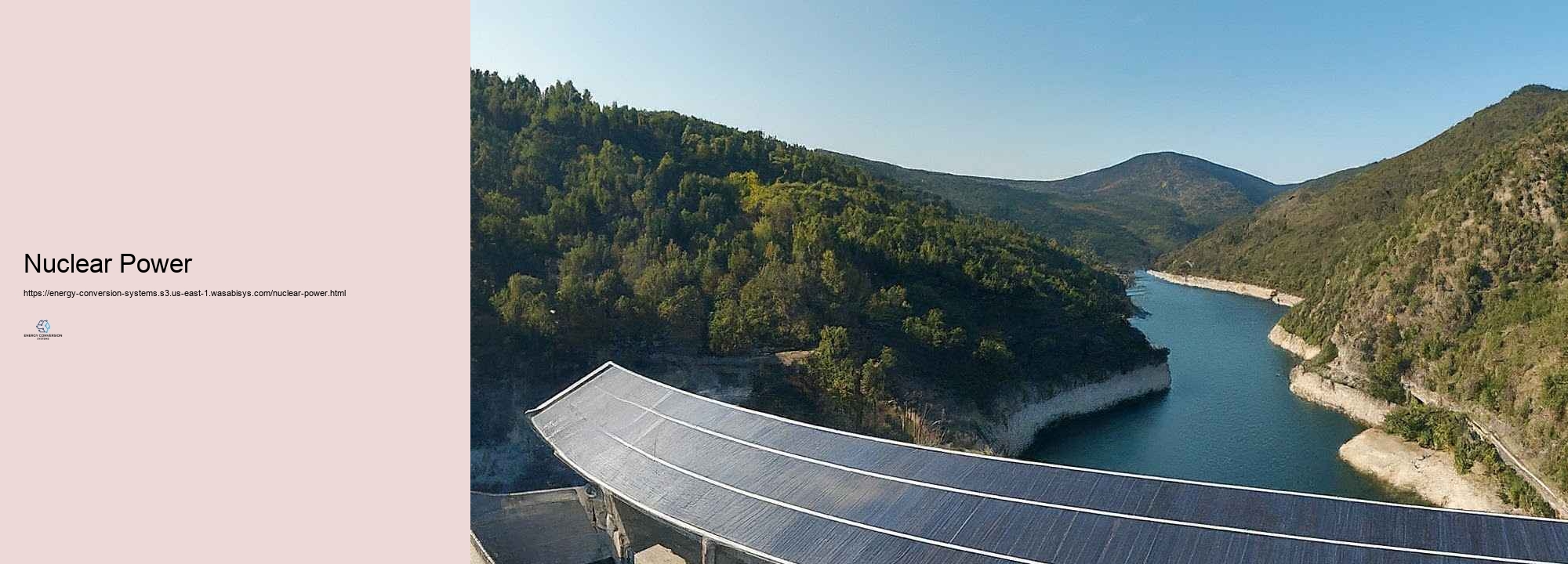
Improving efficiency in energy conversion is a necessary goal in the search of sustainable and cost-efficient energy making. As global energy demand continues to be to climb, boosting the performance of energy conversion treatments has actually wound up being considerably essential for reducing source usage, lowering environmental affects, and making certain energy security. This carrying out integrates a large range of strategies and modern technologies across different energy fields, from standard fossil fuel-based systems to renewable energy modern technologies. Amongst the main places of focus for improving energy conversion efficiency is in thermal power plants, which remain a significant source of power worldwide. Advanced burning technologies, such as supercritical and ultra-supercritical vapor cycles, have been produced to increase the effectiveness of coal-fired nuclear power plant. These systems run at greater temperature degrees and pressures than standard plants, allowing for far better thermal performance and decreased fuel usage. Similarly, combined cycle gas generator (CCGT) plants, which use both gas and heavy vapor wind turbines, can attain performances of about 60%, significantly more than normal single-cycle plants. Waste cozy healing systems mean another vital approach for boosting energy conversion effectiveness. In countless industrial treatments and power generation systems, a significant quantity of warm is shed to the environment. By applying contemporary technologies such as natural Rankine cycles (ORC) or thermoelectric generators, this waste heat can be captured and converted into advantageous electrical energy. This not only boosts general system efficiency nonetheless likewise minimizes the need for included energy input, causing established you back cost savings and lowered ecological impact. In the realm of renewable energy, constant developments are driving improvements in energy conversion efficiency. For solar solar (PV) systems, developments in cell layout and items have brought about constant increases in conversion performance. Multi-junction cells, which use several layers of semiconductor materials to document different parts of the solar range, have in fact achieved effectiveness exceeding 40% in lab settings. Occurring contemporary innovations such as perovskite solar batteries show pledge for added efficiency improvements and cost decreases in solar energy conversion. Wind energy conversion has actually also seen considerable performance renovations through technical developments. Larger wind turbine dimensions, progressed blade layouts, and enhanced control systems have increased the capacity variable of wind ranches. Moreover, the development of overseas wind technology has actually opened up brand-new chances for capitalizing on more powerful and additional constant wind resources, far better boosting energy conversion effectiveness. In the location of energy storage space, which is important for taking care of the intermittency of renewable resource resources, different strategies are being sought to boost efficiency. Advanced battery technologies, such as solid-state batteries and flow batteries, offer the capability for higher energy densities, faster invoicing rates, and much longer lifespans contrasted to typical lithium-ion batteries. These enhancements can produce much more dependable energy storage and circulation systems, decreasing losses in the energy conversion chain. Hydrogen manufacturing and gas cell technologies stand for another place of advancement in energy conversion efficiency. While standard hydrogen manufacturing through heavy steam methane reforming is fairly ineffective, brand-new approaches such as high-temperature electrolysis and solar thermochemical water splitting program pledge for a lot more efficient hydrogen producing. On the use side, innovations in gas cell technology, particularly in proton exchange membrane layer (PEM) gas cells, are improving the performance of changing hydrogen into electrical energy for various applications, consisting of transportation and repaired power generation. The concept of cogeneration, or combined warm and power (CHP), is an essential strategy for boosting overall energy conversion efficiency. By simultaneously producing power and helpful warm from a singular gas source, CHP systems can attain overall efficiencies of approximately 80%, substantially greater than various warmth and power generation. This technique is particularly effective in business setups and area home heating device, where there is a normal demand for both electrical energy and warm. Developments in products science are playing a critical feature in improving energy conversion efficiency throughout various developments. High-temperature superconductors, as an instance, have the feasible to drastically reduce energy losses in power transmission and blood circulation systems. In a similar way, the development of innovative products for generator blades, solar batteries, and gas cells is making it possible for better running temperature levels, enhanced strength, and boosted performance in energy conversion treatments. The mix of artificial intelligence (AI) and expert system formulas right into energy systems is one more ingenious approach to increasing conversion performance. These advancements can improve the procedure of nuclear reactor, renewable energy systems, and grid networks in real-time, adjusting specifications to take full advantage of performance based on present troubles and need patterns. Preparing for maintenance powered by AI can similarly aid quit equipment failings and preserve peak performance, more contributing to general system effectiveness. Smart grid modern-day innovations and demand-side administration techniques are also important for enhancing energy conversion efficiency at the system degree. By permitting much much better interaction and control in between energy producers and customers, brilliant grids can enhance energy distribution, lower transmission losses, and better include renewable resource resources. Demand reaction programs, which incentivize consumers to change their energy usage based on grid conditions, can aid support supply and need extra successfully, lowering the demand for less efficient coming to a head nuclear power plant. The concept of energy cascading, where waste energy from one treatment is made use of as input for an extra, is getting traction as a method for improving complete system effectiveness. Industrial symbiosis, where multiple sectors exchange energy and sources, exhibits this technique. As an example, waste warm from a nuclear power plant might be utilized for district home heating or commercial processes, maximizing the application of energy inputs. Improving the effectiveness of end-use modern technologies is similarly important for general energy conversion efficiency. This includes establishing a great deal even more efficient devices, lighting systems, and industrial equipment.
The adaptation of renewable energy sources into conversion systems is a transformative technique enhancing the worldwide energy landscape. As the globe search for lasting options to meet enhancing energy requirements while easing environmental effects, the duty of renewable resource in conversion systems winds up being seriously important. This assimilation requires integrating lasting sources such as solar, wind, hydro, and biomass with conventional energy systems to generate hybrid systems that enhance energy manufacturing, increase performance, and decrease carbon discharges. By leveraging the sturdiness of both sustainable and traditional energy sources, these systems give a path to a a lot more immune and lasting energy future. Crossbreed energy systems most likely to the leading side of incorporating renewable resource resources into conversion systems. These systems incorporate a number of energy sources to give a stable and trusted power supply. As an example, photovoltaic panels can be coupled with wind turbines to enhance each various other, as solar power is plentiful throughout the day while wind energy can be utilized during the night or throughout bleak days. By incorporating these sources, crossbreed systems can lower reliance on nonrenewable gas sources, reduced greenhouse gas emissions, and supply a more constant energy supply. Furthermore, hybrid systems typically include energy storage area services, such as batteries or thermal storage space, to maintain excess energy created during optimal manufacturing times for usage throughout periods of minimized renewable energy timetable. This capability boosts the stability and flexibility of the energy supply, making it extra resistant to changes in renewable energy generation. The successful adaptation of renewable resource resources into conversion systems additionally counts heavily on developments in grid mix and wise modern technologies. Modern power grids are progressing to healthy the variable nature of renewable energy resources. Smart grids, equipped with advanced sensing units, interaction technologies, and automation, allow real-time security and management of energy blood circulations. This enables the trustworthy combination of renewable resource right into the grid, stabilizing supply and demand dynamically. Smart technologies in addition advertise demand feedback strategies, where consumers adjust their energy usage based upon availability and rate signals, far better improving using renewable resource. By enhancing grid flexibility and sturdiness, these technologies maintain the seamless mix of renewables, ensuring a safe and reputable energy supply. Energy storage space options play a critical duty in the assimilation of renewable resource resources into conversion systems. The recurring nature of renewable resource, such as solar and wind, necessitates the requirement for effective storage space solutions to see to it a consistent energy supply. Advanced battery modern-day technologies, such as lithium-ion and flow batteries, provide dependable storage area options that can shop excess energy created during leading producing times and launch it when required. Furthermore, thermal energy storage space systems, such as molten salt storage room, are utilized combined with concentrated solar power (CSP) plants to maintain warmth for electrical energy generation throughout non-sunny periods. These storage options not simply enhance the dependability and protection of renewable energy systems nonetheless additionally make it feasible for greater infiltration of renewables right into the energy mix, decreasing dependence on nonrenewable fuel resources and decreasing carbon discharges. The adaptation of renewable resource resources is likewise driving the change in the direction of decentralized energy systems. Induction Generators Unlike regular central power generation, decentralized systems develop energy closer to the aspect of consumption, minimizing transmission losses and elevating energy efficiency. Roofing solar panels, little wind turbines, and community-based renewable energy jobs are instances of decentralized systems that urge customers to create their extremely own energy. This decentralization boosts energy security, reduces grid obstruction, and enables much better customer involvement in the energy market. By incorporating renewable energy sources into decentralized systems, areas can complete better energy self-reliance and strength, adding to a much more lasting and equitable energy future. The integration of renewable resource sources right into conversion systems is sustained by advantageous policy and regulating structures. Governments around the world are using policies that desire the fostering of renewable energy, such as feed-in tariffs, tax obligation motivations, and eco-friendly account requirements. These plans create a valuable atmosphere for economic investment in renewable energy projects and promote {research and development in innovative modern-day innovations. On top of that, regulating frameworks are evolving to healthy the one-of-a-kind qualities of renewable energy, such as grid affiliation criteria and web metering policies. By providing a secure and encouraging plan atmosphere, governments can increase the integration of renewable energy sources right into conversion systems, driving the adjustment to a lasting energy future. The adaptation of renewable energy sources right into conversion systems offers significant ecological and financial benefits. By decreasing dependence on nonrenewable fuel resources, these systems reduced greenhouse gas tires, adding to environment change reduction and improved air high quality. Utilizing renewable energy also declines water usage and decreases the environmental impact of energy manufacturing. Financially, the combination of renewables produces chances for job development and economic advancement in the clean energy market. The lowering expenditures of renewable energy modern-day innovations, combined with developments in energy storage area and grid combination, make renewable energy increasingly affordable with conventional energy sources. Therefore, the adaptation of renewables right into conversion systems not just supports ecological sustainability yet also improves energy rate and financial resilience. In spite of the different benefits, the mix of renewable resource resources right into conversion systems faces a number of challenges. These consist of the variability and intermittency of renewable energy, the need for significant framework financial investments, and the ins and out of taking care of diverse energy resources. However, continuous {research and development campaigns are fixing these challenges, leading the way for a lot more trusted and relied on assimilation. The future leads for renewable resource assimilation are motivating, with continued technologies in development, plan aid, and market characteristics driving the change to a lasting energy future. As renewable resource becomes an indispensable part of conversion systems, it will certainly play an important role in meeting international energy demands while securing the setting and marketing economic growth. The adaptation of renewable energy resources right into conversion systems is a transformative process that supplies a path to an added lasting, trustworthy, and resistant energy future. By leveraging crossbreed systems, smart developments, energy storage choices, and encouraging plan frameworks, the combination of renewables can maximize energy manufacturing, lower exhausts, and boost energy safety and safety and security. As the world continues to concentrate on sustainability and climate
activity, the integration of renewable resource right into conversion systems will definitely be an important car driver of the international energy change, forming a cleaner and much more lasting future for generations ahead.

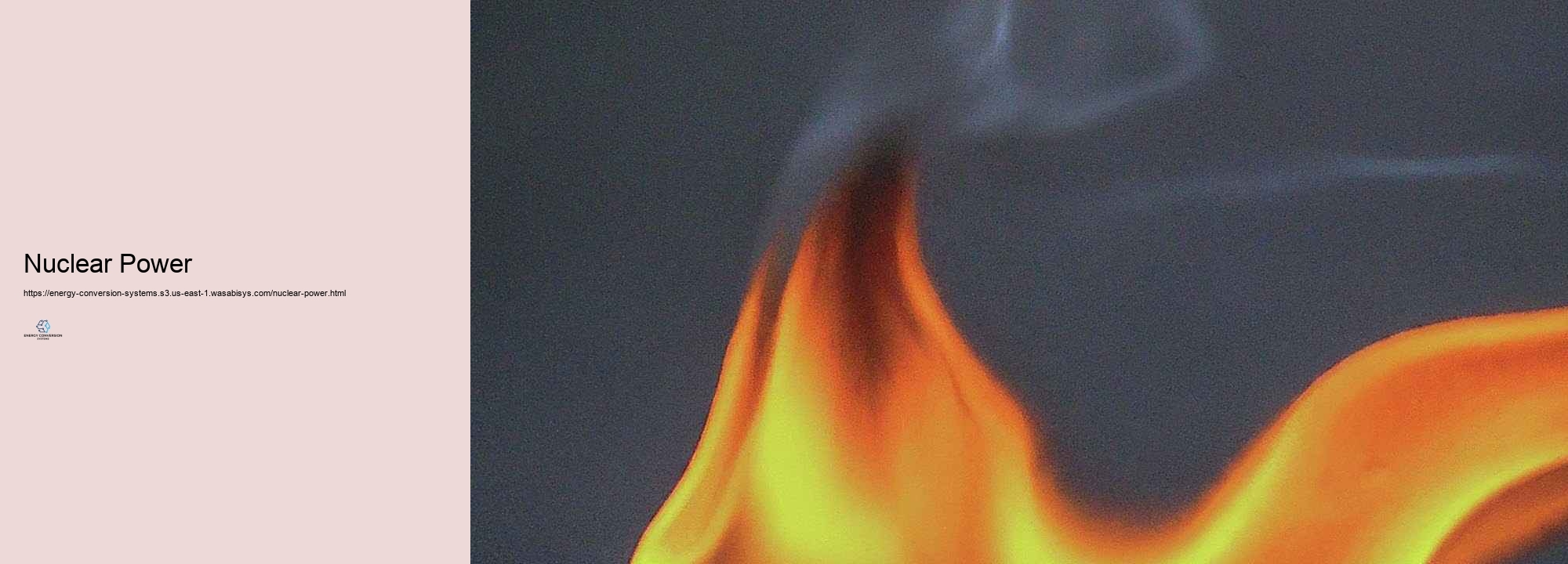
Energy conversion system style is a complicated location that encounters different challenges in the objective for added effective, lasting, and cost-effective treatments. As around the world energy demands continue to be to increase and ecological issues heighten, developers and scientists are charged with developing ingenious approaches to eliminate these challenges. This recap discovers the important difficulties in energy conversion system layout and the emerging options that are creating the future of energy innovation. One of the main problems in energy conversion system layout is boosting efficiency. All energy conversion treatments involve some degree of energy loss, as determined by the laws of thermodynamics. For thermal systems, such as nuclear reactor, this ineffectiveness is often turned up as waste warm. Handling this difficulty ask for a diverse technique. Advanced products that can withstand greater temperatures and pressures are being created, permitting added effective thermodynamic cycles. For example, supercritical and ultra-supercritical vapor cycles in coal-fired nuclear power plant can complete higher efficiency by running at exceptionally warms and stress and anxiety. In inner combustion engines, developments in melting chamber style, fuel shot systems, and exhaust gas recirculation are pushing the restrictions of performance. Another considerable obstacle is the intermittency and irregularity of renewable resource sources. Solar and wind power, while clean and dramatically cost-competitive, are not regularly offered. This irregularity positions difficulties for grid stability and integrity. Solutions to this challenge consist of the growth of cutting-edge energy storage room systems, such as grid-scale batteries, pumped hydro storage area, and occurring modern innovations like flow batteries. Moreover, the layout of crossbreed systems that include different energy resources (e.g., solar-thermal hybrid plants) can help reduce the intermittency problem. Smart grid innovations and need response systems are also being developed to far better look after the balance in between variable supply and need. Ecological impact is an essential consideration in energy conversion system format. Decreasing tires, specifically from fossil fuel-based systems, is a significant challenge. Solutions consist of the development of carbon capture and storage space (CCS) contemporary technologies, which goal to capture CO2 discharges prior to they go into the setting. Advanced burning modern technologies, such as oxy-fuel combustion and chemical looping burning, are being checked out to promote added reliable carbon capture. For renewable resource systems, difficulties consist of decreasing the ecological impact of making processes and handling concerns like wild animals protection in wind ranch design. Scalability and cost-effectiveness existing recurring challenges in energy conversion system format. Photovoltaic Cells Many motivating technologies that work well in lab configurations handle difficulties when scaled about business degrees. As an example, gas cells have really shown excellent possible for trustworthy energy conversion, yet challenges in scaling up making and lowering expenses have limited their extensive promoting. Solutions entail research right into brand-new products and producing procedures to decrease costs and boost toughness. Additionally, modular format techniques are being checked out to advertise much easier scaling and personalization of energy systems. The assimilation of various energy conversion systems positions one more considerable challenge. As the energy landscape ends up being additional different, with a mix of traditional and green resources, producing systems that can interact successfully becomes essential. Solutions include the growth of sophisticated control systems and power electronic devices that can handle the intricacies of incorporating numerous energy resources. Virtual power plant concepts, which aggregate and coordinate dispersed energy resources, are becoming a remedy to this combination problem. Product restrictions existing repeating troubles in energy conversion system style. Various cutting-edge energy advancements require uncommon or costly items, which can limitation their scalability and financial usefulness. As an example, some high-efficiency solar batteries trust unusual planet aspects. Solutions to this obstacle contain research into different items, such as earth-abundant elements for solar batteries, and the innovation of reusing technologies to recoup and reuse important materials from decommissioned systems. Thermal management is a vital difficulty in a number of energy conversion systems. Effective air conditioning is essential for keeping effectiveness and long life, especially in high-temperature applications like gas turbines or concentrated solar energy systems. Solutions include ingenious cooling contemporary innovations, such as closed-loop vapor cooling down for gas generator blades, and the advancement of brand-new materials with far much better heat-resistant homes. In electronic systems, technologies in warm sink layout and utilizing phase-change products for thermal administration are being discovered. Energy storage area continues to be a significant obstacle, especially for applications calling for high energy thickness or fast charge/discharge cycles. While lithium-ion batteries have actually seen substantial remodellings, they still encounter restraints in energy thickness and cycle life. Solutions being discovered consist of the development of solid-state batteries, which assurance better energy thickness and improved safety, and research into unique chemistries like lithium-sulfur or lithium-air batteries. For grid-scale storage space, flow batteries and sophisticated mechanical storage area systems (like pushed air energy storage) are being created. The problem of system stability and maintenance is vital, especially as energy systems become added difficult and distributed. Making sure long-lasting integrity while reducing maintenance needs is vital for the economic security of energy conversion systems. Solutions include the development of innovative tracking and evaluation systems, typically leveraging experienced system and artificial intelligence algorithms to anticipate and protect against failings. The principle of self-healing systems, which can instantaneously spot and deal with tiny concerns, is likewise being checked out. Versatility in energy conversion systems is ending up being considerably crucial as energy grids development. Systems requirement to be able to respond without delay to adjustments prominent and supply, specifically with the raising seepage of variable renewable resource resources. Solutions consist of the growth of a lot more functional thermal power plants that can ramp up and down quickly, utilizing energy storage space systems to offer grid services, and the execution of demand responses innovations that can readjust energy use based on grid conditions. The field of energy conversion system design take care of several troubles in the mission of far more efficient, sustainable, and credible energy services. Nevertheless, these troubles are driving development across a range of advancements and approaches. From ingenious products and unique system creates to the assimilation of electronic innovations and brilliant control systems, the solutions being created are not simply addressing existing obstacles nonetheless in addition blazing a trail for the future generation of energy conversion systems. As {research and development proceed, these services assurance to improve the worldwide energy landscape, moving us towards a a lot more lasting and efficient energy future.
The impact of energy conversion systems on ecological sustainability is profound and varied, impacting everything from greenhouse gas discharges and resource deficiency to ecological community health and biodiversity.
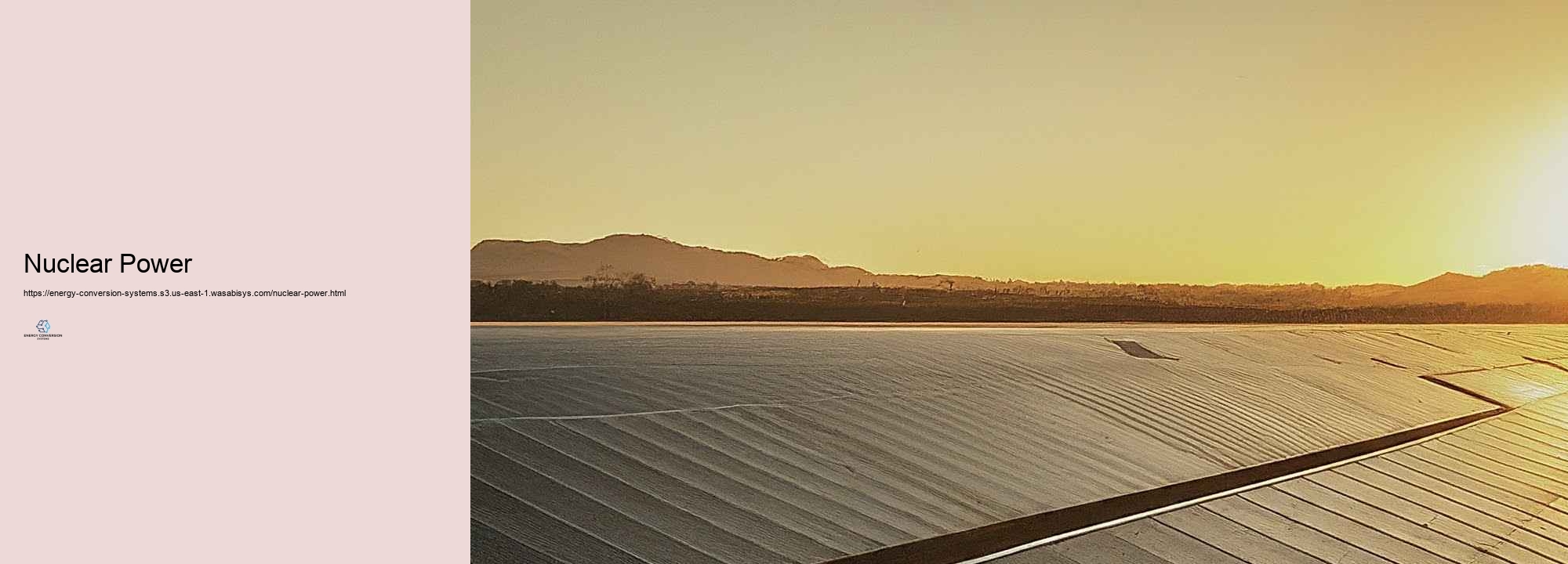
Energy conversion systems are technologies or processes that transform one form of energy into another, such as converting solar energy into electricity or mechanical energy into electrical energy.
Common types of energy conversion systems include solar photovoltaic panels, wind turbines, fuel cells, hydroelectric power systems, and geothermal energy converters.
Energy conversion systems improve efficiency by optimizing the process of converting energy from one form to another, reducing waste, and enhancing the overall output of usable energy.
Energy conversion systems are crucial in renewable energy as they enable the transformation of natural energy sources like sunlight, wind, and water into electricity, supporting sustainable power generation.
Challenges include optimizing efficiency, minimizing energy loss, integrating with existing grids, managing costs, and ensuring reliability and sustainability of the energy sources used.